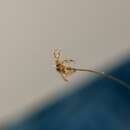en
names in breadcrumbs


Recent mophological (Yoshizawa & Johnson 2006) and molecular evidence (Johnson et al. 2004) has shown that the parasitic lice (Phthiraptera) evolved from within the psocopteran suborder Troctomorpha. In modern systematics, Psocoptera and Phthiraptera are therefore treated together in the order Psocodea (Bess et al. 2006).
In the Phthiraptera, louse is used for the singular and lice are used for the plural.“There are more than 3, 000 known species of lice and…more remain undescribed” (Smith and Page, 1997).They are usually about 0.5-6 millimeters in length.They require a host to survive and would not last long without one.Lice lack wings and mostly feed on skin or blood.Depending on the species, they feed by sucking or chewing.They can be found on “every avian and mammalian order except for monotremes (the platypus and echidnas), bats, whales, dolphins, porpoises, and pangolins” (Wikipedia, 2013).For mammals, the lice will attach their eggs with saliva.For birds, the lice will lay their eggs in spots that the birds cannot reach with their beaks.Lice tend to be more aggregated when living on bird species.They undergo incomplete metamorphosis.Within a month, the nymphs will molt three times before becoming an adult.